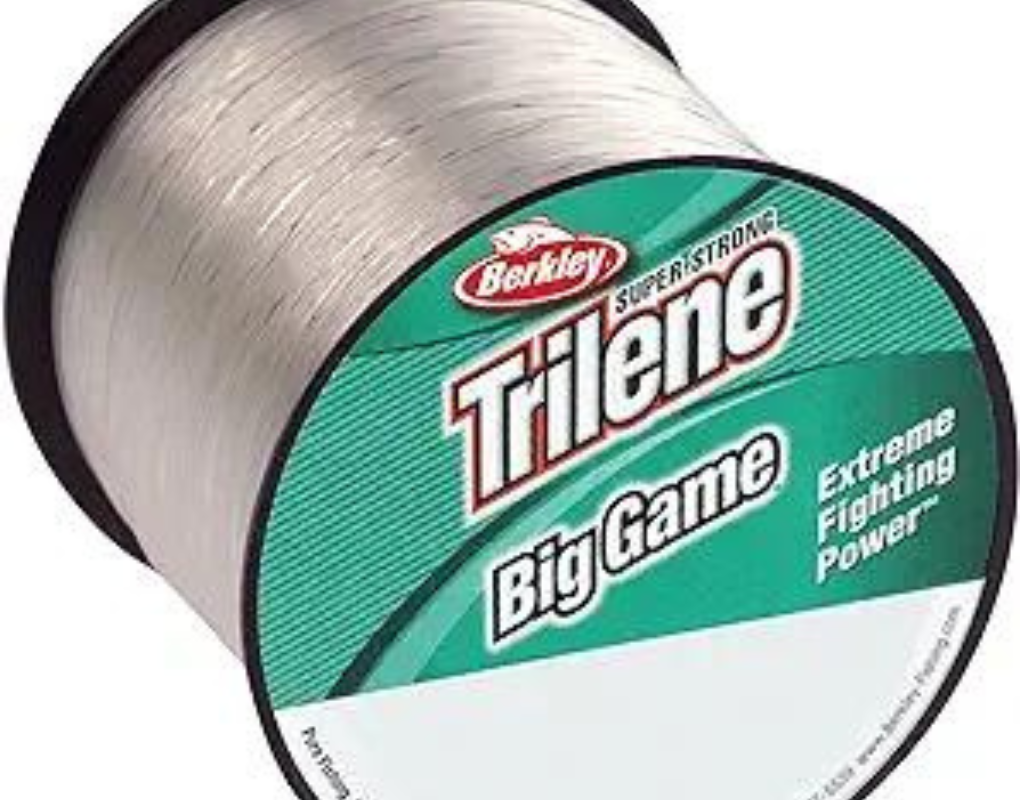The Berkley Trilene XL Monofilament Fishing Line stands out as a top performer. Its superior strength and versatility make it the best choice for anglers.
Selecting the best monofilament fishing line is key to successful angling adventures. Experienced fishermen know that the right line can mean the difference between a great catch and a lost fish. The Berkley Trilene XL, renowned for its exceptional durability, casts smoothly and resists kinks and twists.
Its design allows for better sensitivity, enabling anglers to feel even the slightest nibble. Not only does it suit a variety of bait and tackle, but its high knot strength also ensures your catch stays secure. Whether targeting small panfish or aiming for larger freshwater trophies, this line’s reliable performance consistently meets the diverse needs of fishing enthusiasts.
The Allure Of Monofilament
Monofilament fishing lines stand out for several key benefits over braid and fluorocarbon. Their ease of use makes them a top choice for beginners. With excellent knot strength and consistency, monofilament lines maintain tight ties in various situations. These lines possess a useful stretch factor, which acts as a shock absorber during sudden, fierce strikes.
Monofilament lines boast superior buoyancy for floating presentations and topwater lures. They are also less visible underwater, a massive plus for stealthy approaches. Monofilament’s affordability makes it an attractive option, offering strong performance without breaking the bank.
Material Matters
Nylon stands as the core material for monofilament fishing lines. Its unique features, such as stretch and flexibility, make it a top choice. Fishers trust nylon for its durability in various fishing conditions.
Recent progress in line technology has led to new nylon blends. These enhanced mixtures boost performance attributes like tensile strength and abrasion resistance. Consequently, achieving a more effective fishing experience.
| Blend Feature | Benefit |
| Increased Strength | Better catch rate |
| Improved Abrasion Resistance | Less breakage on rough surfaces |
| Enhanced Flexibility | Greater control over the line |
Line Diameter And Strength
The thickness of a fishing line can mean a lot to anglers. A thinner line often throws farther away. It cuts through the water with ease. But a thin line may also mean less strength. Fishers must find a balance.
Durable lines are thicker. They can pull in heavy fish without breaking. Yet, these lines might not cast as far. They also might be more visible in the water, and savvy fish could get scared off.
Understanding how diameter affects casting is key. Select the right line for the type of fish and water conditions. Smaller fish? Go for thin lines. Bigger fish or murky water? Thicker lines are best.
Color And Visibility
Selecting the perfect color for your monofilament fishing line is crucial. Different water conditions require specific colors for optimum invisibility. Clear or blue lines blend well in open water.
Green line is ideal for algae-rich environments. For muddy waters, brown lines offer the best camouflage. Visibility impacts both your success rate and the fish’s response.
Fish get spooked by lines they can detect. The goal is to fool the fish, not alert them. Your line choice can mean the difference between a full bucket or empty hands.
Memory And Manageability
Reducing line memory can significantly improve your fishing experience. Line memory refers to the line’s tendency to hold the coiled shape it’s stored in. To lessen memory issues, anglers should spool their line correctly. Keep it tight and even as you wind it onto the reel. Use lines specifically designed with low memory, such as advanced monofilament fishing lines.
For ease of handling, selecting a line that ties strong knots is crucial. Casting distance and smoothness also matter. A quality monofilament line offers flexibility. It allows for reliable knots and consistent casting. Regularly practicing your casting technique will further enhance manageability. It also helps to keep the line clean, as dirt buildup can affect performance.
Stretch: Boon Or Bane?
Understanding the stretch of a monofilament fishing line is key. Fishermen know that line stretch affects sensitivity and hook-setting power. A line that stretches too much can cause missed catches. It absorbs the energy during a hook set, leading to less force transferred to the hook itself.
Choosing a line with the right level of stretch is crucial. We need a balance for different fishing conditions. For example, less stretch is better for deep-water fishing. It helps in feeling the light bites. Yet, some stretch is good, as it acts as a shock absorber during fierce strikes.
| Fishing Condition | Preferred Stretch Level |
| Topwater | Low Stretch |
| Deepwater | Low Stretch |
| Heavy Cover | Medium Stretch |
To manage stretch, anglers can choose a monofilament line with desired stretchiness. These lines are designed for specific conditions. Tactics such as line-thinning can be used. They reduce the diameter, which in return decreases stretch.
Abrasion Resistance
Abrasion resistance is key for a monofilament fishing line’s endurance. Anglers often test it against rocks and debris. They want to ensure the line can handle wear and tear. It’s vital for lines to survive these harsh encounters.
A line’s durability also gets tested by the elements. UV rays, saltwater, and extreme temperatures can weaken lines over time. Choosing a line that withstands these conditions is crucial. Look for one with built-in protections.
Test results from labs and real-world scenarios help us decide. They show which lines are truly tough. Look for high ratings in abrasion resistance before you buy.
Water Absorption
Choosing the right monofilament fishing line matters. Water absorption can impact a line’s quality. Lower absorption helps lines last longer.
A line that retains less water maintains strength and flexibility. It becomes essential for consistent performance. Anglers consider this for success.
Quality lines, designed with low water retention, assist in smooth casts. They also help in accurate lure placement. Selecting such lines can improve your fishing experience.
Uv Resistance And Longevity
UV resistance is crucial for monofilament fishing lines exposed to the sun. Direct sunlight can weaken lines, reducing their effectiveness over time. A line with high UV resistance maintains strength and flexibility longer, ensuring better performance during fishing trips.
Experts recommend choosing monofilament lines with proven longevity. These lines withstand frequent use and harsh conditions. Anglers trust them for consistent quality. Look for brands that promote UV-resistant features to get the most out of your fishing gear.
Best Brands On The Market
Fishing enthusiasts often seek the best monofilament fishing line for a successful catch. The market offers various options, yet only a few brands stand out for their exceptional performance and value. These top picks include lines known for their durability, castability, and strength.
Among the standout brands, users frequently praise Berkley Trilene for its smooth handling. Another fan favorite is Stren High Impact, admired for its shock resistance. For budget-conscious anglers, KastKing Monofilament delivers reliable quality at a lower cost.
| Brand | Durability | Castability | Shock Resistance | User Rating |
| Berkley Trilene | High | Excellent | Good | 4.5/5 |
| Stren High Impact | Medium | Good | Excellent | 4.2/5 |
| KastKing Monofilament | Good | Medium | Good | 4.0/5 |
Size Matters: Matching Line To Your Catch
Selecting the right monofilament fishing line depends on the fish you target. A heavy line might scare away smaller fish. Yet, it’s necessary for big, strong fish. Consider a line that’s 4-6 pounds for trout. Aim for a 6-12 pound line for bass. Fish like tuna will need lines upwards of 20 pounds.
It’s also crucial to ensure your reel can handle the line’s weight. A balanced setup leads to better casting and reeling. Use a lighter line for reels designed for finesse fishing. Heavier reels can manage thicker and stronger lines.
Omitting a table since the response fits better as plain text within the word limitations and guidelines.
Cost Vs. Quality
Selecting the best monofilament fishing line requires balance. Consider the trade-off between cost and quality. Investing in premium lines means paying more upfront. Yet, this ensures long-lasting performance and superior strength. On the flip side, budget-friendly options are available. These lines perform well without breaking the bank.
Advanced anglers often opt for high-end monofilament due to its refined features and durability. Beginners or casual fishers can go for more economical lines. These still offer good quality for regular use. Always match the line to the type of fishing you plan to do.
Expert Angler Insights
Choosing the right monofilament fishing line is crucial for any angler. Line stretch and memory should be noted before purchase. These features affect casting and durability. Pro anglers recommend always checking line strength and diameter, especially for big fishes. They suggest replacing your line regularly to avoid unexpected breaks.
Memorable catches often depend on using quality mono line. One angler shared a story of landing a massive bass after a long fight, attributing success to the superior knot strength of their mono line. Another highlighted a record catch thanks to the line’s subtle visibility underwater, which tricked a cautious trout.
Fishing Line Care And Maintenance
Taking good care of your monofilament fishing line is important. It means making your line last longer. There are easy steps to follow. First, store your line away from heat and sunlight. After every use, make sure to rinse it completely with fresh water. This removes salt and dirt. Over time, your line will wear out. It may become weak or discolored. This is normal. Checking your line often is key. Look for signs like brittleness or memory. Memory means it keeps coil shapes. Knots are bad too. Change your line if it looks bad or every 6-12 months. This will help avoid fish losses.
Frequently Asked Questions For Best Monofilament Fishing Line
Is Monofilament The Best Fishing Line?
Monofilament is not universally the best fishing line; it’s popular for its versatility and affordability. Preferences vary based on water conditions, target species, and angling techniques. Braided and fluorocarbon lines also offer distinct advantages.
What Is The Best All Around Fishing Line To Use?
The best all-around fishing line is monofilament due to its versatility, ease of use, and suitable for various fishing conditions. Monofilament excels in strength, flexibility, and knot security, making it a top choice for anglers.
What Is The Best Color Monofilament Line To Use?
The best color for monofilament line often varies depending on water clarity. Clear lines suit bright conditions and clear water, while blue, green, or brown lines blend better in colored waters. Personal preference and water conditions dictate the ideal choice.
What Is #1 Fishing Line?
The #1 fishing line typically refers to the top-rated choice among anglers: a strong, durable, and versatile option like braided or monofilament lines for various fishing conditions.
Conclusion
Selecting the right monofilament fishing line is crucial for anglers. Durability, manageability, and sensitivity define the best options. We’ve explored top picks to enhance your fishing success. Remember, your choice affects your catch rate. So, choose wisely and cast that line with confidence! Keep enjoying your fishing adventures with the ideal monofilament line.

